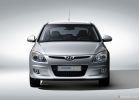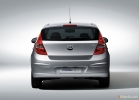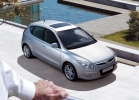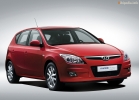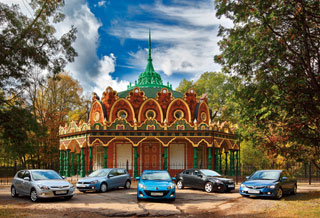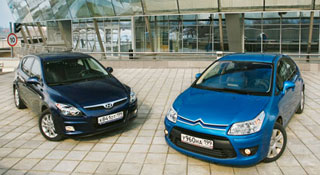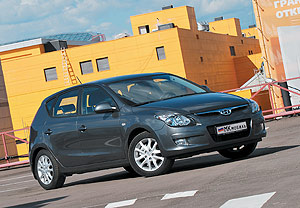Test Drive Hyundai I30 since 2007 Hatchback
Hyundai i30: they are already here
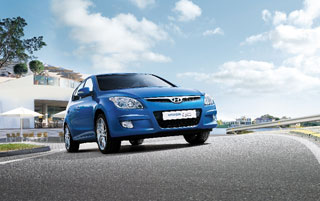 It's time to stop looking at the Korean Hyunda cars as something simple and cheap, and even with Asian flavor. We hinted this year ago during the comparative test of Elantra, once again repeated recently I20, and finally convinced I30.
It's time to stop looking at the Korean Hyunda cars as something simple and cheap, and even with Asian flavor. We hinted this year ago during the comparative test of Elantra, once again repeated recently I20, and finally convinced I30. The road to the center of Europe turned out to be difficult. Airplane to Prague, and then 400 km by bus to Ostrava. Because of the snowfall covered by the Czech Republic, the bus trip came out rather long, and we arrived at the place only in the evening. The goal of our journey was new, with a needle, a car facility in the town of Nosovice, near the Ostrava, on which Hyundai I30 began to collect from November last year. Why there? Geographically, this is really a center of Europe, from which to submit to Germany to Germany, and to Russia. And very close to, in neighboring Slovakia, another same plant that produces a rattulate Kia Ceed. Cooperation, reduction of costs, and all other charms. Already one convincingly indicates the seriousness of the intentions of the Korean company to seize the share of the European market. Add here the fact that I30 was developed in the design center of the company in German Rüsselheim (there is located, by the way, Opel headquarters), and it becomes clear that the European Golf Class will have to be sighted. How much? Check now.
View
The form of the i30 is almost a European car. Why almost? Liccino came out a little unplaced and with some notes of the former Korean design. In the profile and behind the car looks pretty, it is interesting, in a European, but in front of the designers, as if inspired, and they performed it well, neatly, but without a light. It is a pity, after all, the smile of the Common Kia Ceed looks more interesting and more fun, and this is, no matter how cool, one of the arguments when buying a car. But, in the end, in addition to the design of the front part in the car there are still a lot of things.
Polygon
Initially, we had to carry out the instructors in the landfill, which did not cause enthusiasm, but then the Koreans fairly reasoned that Russian journalists were able to independently overcome a couple of half-and-and-auristricular circles on Special Morthores, on which cars were shuffled off from the conveyor. She is good because there are many different coatings on it, from the shaking belgi to a flat site, where it is possible to accelerate, and then on a heterogeneous coating to test the operation of the ABS. There is still a rather steep rise in which you should stop and move, checking the work of the handbrake and clutch, and the profiled turning, where the operation of the steering and stabilization system is checked. From the first circle, I celebrate good noise insulation and a well-minded, absolutely European chassis. Elantra, on the platform which I30 is made, is also going well, but here we clearly worked on the settings of the shock absorbers and springs, which is why the behavior of the car still improved. For dinner, I asked Koreans, then supplies them shock absorbers? They clarified by phone and answered, they say, shock absorbers are good, German, Sachs. That I30 is better going better than Elantra.
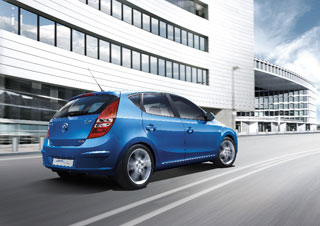 Autobahn
Autobahn For the test, only a car with a manual box and a 1,4-liter 109-strong engine was available, but I will not discontend buyers from it in favor of the car with a 1.6-liter engine. The engine is contemporary and for such a car sufficient: the driver and three adult passengers accelerates well, on the autobare you can keep allowed 130 km / h, however, when overtaking, it is necessary not to get involved, performing them with a margin. Translations are translated clearly, working with a lever of the box is a pleasure, not all European cars boast such a mechanism. It is gratifying that even at high speed, the noise of the motor does not become annoying thanks to good noise insulation and a proper exhaust. At high speed, the car is stable, in turns no serious comments do not deserve too.
Space and convenience
The salon is fully fulfilled: the design is not prefabricated, but quite cute, the materials of the finish for the car of this class are quite good, the salons of new cars do not smell any chemistry from which the head can get across. The dashboard is pleased with the simple and design similar to the same GETZ, besides, the tall drivers will not see the upper part of the scale, because it overlaps the rim. Otherwise, the ergonomics of the driver's seat did not cause complaints, even I didn't even immediately with my height above, but it sat down comfortably. I really like the fact that the car has a long base: the colleague of my growth and the complex is located in the rear seat, without resting his knees into the back of the driver's seat and not backing the head of the ceiling. If necessary, the rear seats can be folded in parts or entirely, it will be quite a pretty space with a smooth floor practical.
Hold on, Europe
What are the chances of the i30 in our market? It seems that good. The car is made quite well, and when, after test drive, Koreans asked what shortcomings we noted, I could not remember something serious, and in fact there were two complaints: a boring face and the fact that the top parts of the instrument scales are not visible. What do we get in the end? Designed and manufactured in Europe, a golf class with a 109-strong motor and a manual transmission, which is already in the basic configuration conditioner, 6 airbags, ABS, heated mirrors and seats, will cost 530900 rubles from us. For 605900 rubles you can get additional climate control, power windows and a lot more. If you want an automatic box, then alas, only
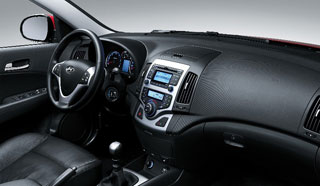 with a 1.6-liter 122-strong engine at a price of 673900 rubles, which, however, is not so much at the current rate. The main thing is to get rid of the idea that Korean cars are cheap soaps, which you can forgive much because they are cheap. Today Koreans are already quite Europeans, and we need to be considered.
with a 1.6-liter 122-strong engine at a price of 673900 rubles, which, however, is not so much at the current rate. The main thing is to get rid of the idea that Korean cars are cheap soaps, which you can forgive much because they are cheap. Today Koreans are already quite Europeans, and we need to be considered. Plant in Nosovice.
Launched in November 2008, the assembly plant in the Nosovice, which collects the hatchback and the I30 wagon, is distinguished by a very high degree of automation of production. Robots on all car assembly enterprises a lot, but here they are perhaps most of all produced by Hyundai. Result: The estimated capacity of the plant is 300,000 cars per year with the number of employees of 3560 people, taking into account both the administration and transmission production, where it is planned to produce up to 600,000 transmissions annually. There is no such performance for one employee, probably nowhere. To the question, why so many robots, because there could be a lot of people, Koreans replied that the initial investments, of course, above, but then the robots reappear repeatedly. While, however, the plant works only in one shift, the launch of the second postponed due to insufficient demand. A crisis
Technical Specifications Hyundai I30 Hatchback
1.4 MT / 1.6 MT (AT)
Power, l. with. at rpm
109 at 6200/122 at 6200
Moment, nm at rpm
137 at 5000/154 at 4200
Max. Speed, km / h
187 / 192 (183)
Acceleration 0-100 km / h, sec
11,7 / 11 (12,1)
Fuel consumption, l / 100 km
town
7,6 / 8,0 (9,0)
route
5,2 / 5,2 (5,7)
average
6,1 / 6,2 (6,9)
Length / Width / Height, mm
4245/1775/1480
Wheel base, mm
2650
Curb weight, kg
1193 / 1193(1214)
Configuration and prices
1.4 MT Classic: ABS + EBD, 6 airbags, heated front seats, front electric windows, heated mirrors, air conditioning, fabric interior, tape recorder with 4 speakers
530900 rub
1.4 MT Comfort: (Advanced) Active front headrests, rear power windows, climate control, on-board computer, wiper heating, rain sensor, steering wheel trim and gearbox knobs, tape recorder with 6 speakers, alloy wheels
605900 rub
1.6 AT STYLE: (Optional) ESP, Electricaling Mirrors, Light Sensor, Leather Salon
715900 rub
Pros: Rich equipment, good driving quality, good noise insulation
Cons: boring face, 1,4-liter version only with mechanics
Leonid Klimanovich
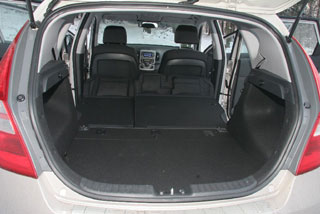
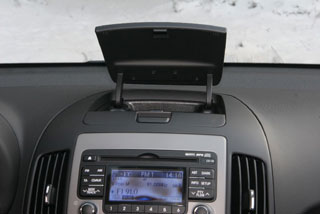
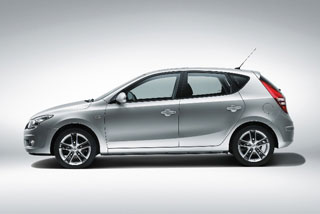
A source: Journal "Behind the wheel"
Video Crash tests Hyundai i30 since 2007
Test drives Hyundai i30 since 2007
Crash test Hyundai i30 since 2007
Crash Test: Details34%
Driver and passengers
14%
Pedestrians
38%
Children-passengers

